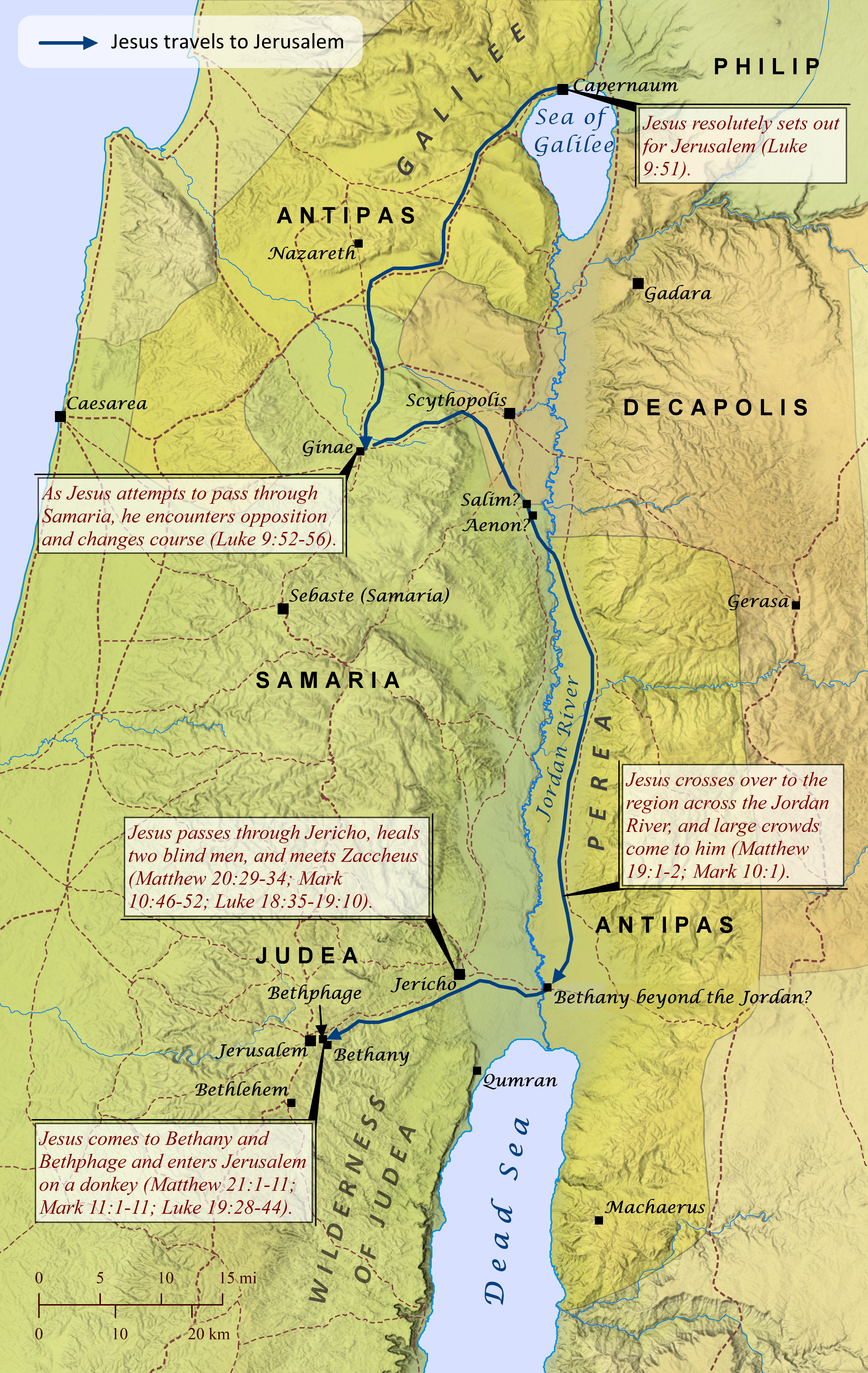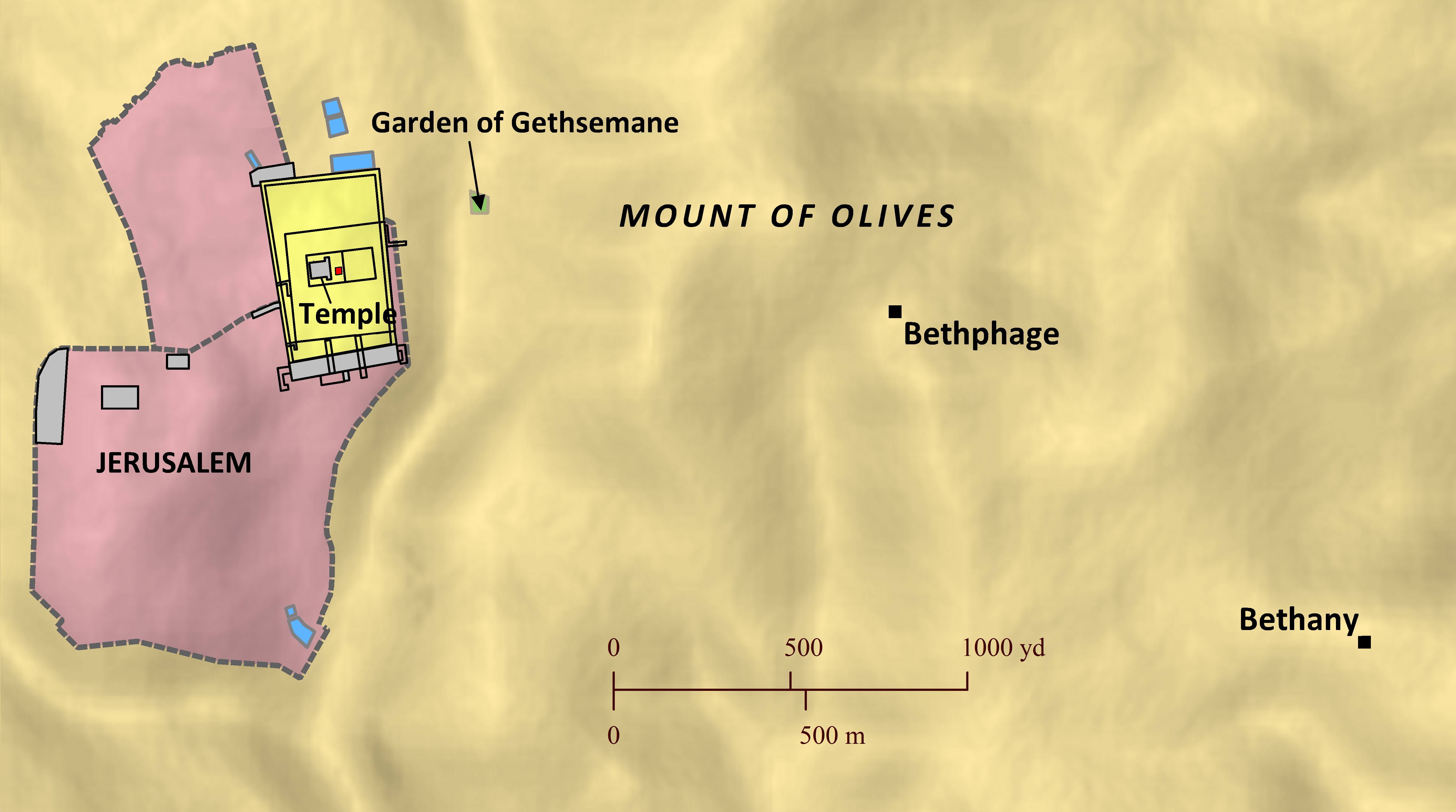Note: This view shows ‘verses’ which are not natural language units and hence sometimes only part of a sentence will be visible—click on any Bible version abbreviation down the left-hand side to see the verse in more of its context. Normally the OET discourages the reading of individual ‘verses’, but this view is only designed as a tool for doing comparisons of different translations—the older translations are further down the page (so you can read up from the bottom to trace the English translation history). The OET segments on this page are still very early looks into the unfinished texts of the Open English Translation of the Bible—please double-check these texts in advance before using in public.
AICNT And when he drew near and saw the city, he wept over it,
OEB When he drew near, on seeing the city, he wept over it, and said,
WEBBE When he came near, he saw the city and wept over it,
WMBB (Same as above)
NET Now when Jesus approached and saw the city, he wept over it,
LSV And when He came near, having seen the city, He wept over it,
FBV But as he got closer, he saw the city and wept over it.
TCNT As he drew near to Jerusalem and saw the city, he wept over it,
T4T When Jesus came near to Jerusalem and saw the city, he cried about its people.
LEB ¶ And when he approached and[fn] saw the city, he wept over it,
BBE And when he got near and saw the town, he was overcome with weeping for it,
Moff And when he saw the city, as he approached, he wept over it,
Wymth When He came into full view of the city, He wept aloud over it, and exclaimed,
ASV And when he drew nigh, he saw the city and wept over it,
DRA And when he drew near, seeing the city, he wept over it, saying:
YLT And when he came nigh, having seen the city, he wept over it,
Drby And as he drew near, seeing the city, he wept over it,
RV And when he drew nigh, he saw the city and wept over it,
SLT And as he drew near, having seen the city, he wept over it,
Wbstr And when he had come near, he beheld the city, and wept over it,
KJB-1769 ¶ And when he was come near, he beheld the city, and wept over it,
KJB-1611 ¶ And when he was come neere, he beheld the city and wept ouer it,
(Modernised spelling is same as from KJB-1769 above, apart from punctuation)
Bshps And when he was come neare, he behelde the citie, and wept on it.
(And when he was come near, he beheld the city, and wept on it.)
Gnva And when he was come neere, he behelde the Citie, and wept for it,
(And when he was come near, he beheld the City, and wept for it, )
Cvdl And whan he was come neare, he behelde the cite, and wepte vpo it,
(And when he was come near, he beheld the city, and wept upon it,)
TNT And when he was come neare he behelde the citie and wept on it
(And when he was come near he beheld the city and wept on it )
Wycl And whanne he neiyede, `he seiy the citee,
(And when he came_near, he see the city,)
Luth Und als er nahe hinzukam, sah er die Stadt an und weinete über sie
(And as he near hinzukam, saw he the city at/to and weep/cryte above they/she/them)
ClVg Et ut appropinquavit, videns civitatem flevit super illam, dicens:
(And as he_approached, seeing the_city flevit over her, saying: )
UGNT καὶ ὡς ἤγγισεν, ἰδὼν τὴν πόλιν, ἔκλαυσεν ἐπ’ αὐτήν
(kai hōs aʸngisen, idōn taʸn polin, eklausen ep’ autaʸn)
SBL-GNT Καὶ ὡς ἤγγισεν, ἰδὼν τὴν πόλιν ἔκλαυσεν ἐπʼ ⸀αὐτήν,
(Kai hōs aʸngisen, idōn taʸn polin eklausen epʼ ⸀autaʸn,)
RP-GNT Καὶ ὡς ἤγγισεν, ἰδὼν τὴν πόλιν, ἔκλαυσεν ἐπ' αὐτῇ,
(Kai hōs aʸngisen, idōn taʸn polin, eklausen ep' autaʸ,)
TC-GNT Καὶ ὡς ἤγγισεν, ἰδὼν τὴν πόλιν, ἔκλαυσεν ἐπ᾽ [fn]αὐτῇ,
(Kai hōs aʸngisen, idōn taʸn polin, eklausen ep autaʸ, )
Key for above GNTs: yellow:punctuation differs, red:words differ (from our SR-GNT base).
BMM BibleMapper.com Maps:

Jesus’ Final Journey to Jerusalem
Much like the difficulties of discerning the Israelites’ journey to the Promised Land (see here), the task of reconciling the four Gospel accounts of Jesus’ final journey to Jerusalem into one coherent itinerary has proven very challenging for Bible scholars. As with many other events during Jesus’ ministry, the accounts of Matthew, Mark, and Luke (often referred to as the Synoptic Gospels) present a noticeably similar account of Jesus’ final travels, while John’s Gospel presents an itinerary that is markedly different from the others. In general, the Synoptic Gospels present Jesus as making a single journey to Jerusalem, beginning in Capernaum (Luke 9:51), passing through Perea (Matthew 19:1-2; Mark 10:1) and Jericho (Matthew 20:29-34; Mark 10:46-52; Luke 18:35-19:10), and ending at Bethany and Bethphage, where he enters Jerusalem riding on a donkey (Matthew 21:1-11; Mark 11:1-11; Luke 19:28-44). John, on the other hand, mentions several trips to Jerusalem by Jesus (John 2:13-17; 5:1-15; 7:1-13; 10:22-23), followed by a trip to Perea across the Jordan River (John 10:40-42), a return to Bethany where he raises Lazarus from the dead (John 11), a withdrawal to the village of Ephraim for a few months (John 11:54), and a return trip to Bethany, where he then enters Jerusalem riding on a donkey (John 12:1-19). The differences between the Synoptics’ and John’s accounts are noteworthy, but they are not irreconcilable. The Synoptics, after noting that Jesus began his trip at Capernaum, likely condensed their accounts (as occurs elsewhere in the Gospels) to omit Jesus’ initial arrival in Jerusalem and appearance at the Festival of Dedication, thus picking up with Jesus in Perea (stage 2 of John’s itinerary). Then all the Gospels recount Jesus’ trip (back) to Bethany and Jerusalem, passing through Jericho along the way. Likewise, the Synoptics must have simply omitted the few months Jesus spent in Ephraim to escape the Jewish leaders (stage 4 of John’s itinerary) and rejoined John’s account where Jesus is preparing to enter Jerusalem on a donkey.

Bethany and Bethphage
Matthew 21:1-17; Mark 11:1-11; Luke 19:28-48; John 12:1-19; see also Matthew 26:6-13; Mark 14:3-9
At the start of Passover one week before he was crucified, Jesus and his disciples traveled to Jerusalem, approaching the city from the east. When they arrived at the village of Bethphage, Jesus mounted a donkey and rode down the Mount of Olives as a humble king entering his capital city. Along the way, many people laid branches and cloaks in his path to welcome him. After Jesus entered the city, he immediately went up to the Temple and drove out the moneychangers and merchants there, and he healed the blind and the lame. Then he traveled nearly two miles outside the city to the village of Bethany to spend the night, which appears to have been where he typically lodged each night while visiting Jerusalem during the crowded Passover festival. Bethany is also where Jesus’ close friends Mary, Martha, and Lazarus lived. One evening while Jesus was there at a large dinner party given in his honor, Martha served the food, and Mary poured expensive perfume on Jesus’ feet and wiped his feet with her hair.

